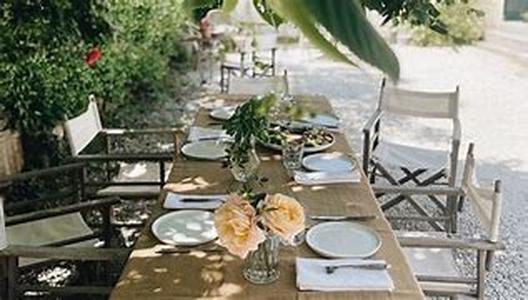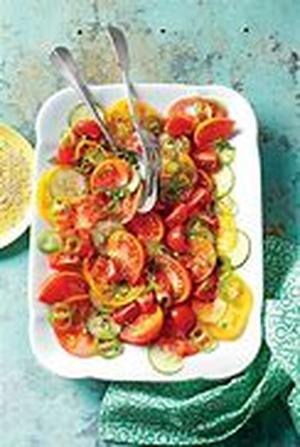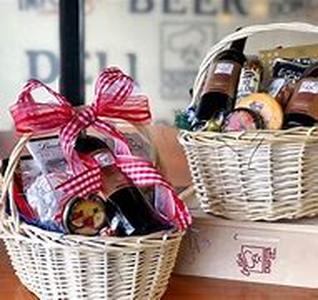
People Here In Chicago Stepped Outside This Week To Falling Leaves, (rapidly) Cooling Temperatures, And That Crisp Scent In The Air That Could Only Mean One Thing: Fall Is Really Here. And With The Brisk Weather, Falling Leaves, And Halloween Decorations Comes Another Fall Staple: Apple Cider.Yes, Cider! That Sometimes Clear, Sometimes Murky, Dry-or-sweet-or Tart Libation That Americans Drank By The Gallon Before Beer Came Along And Screwed Everything Up. Yet Despite Its Seasonal Charm, And Despite A Recent Surge In Popularity (no Doubt Thanks To My Tireless Efforts), For Some People This Drink Is Still Hard To Find. Thats Why Ive Put Together This Helpful Guide. Whether Youre Like Me And Lament The Downfall Of Hard Cider As Americas Beverage Of Choice Or Youre Thirsty For Something Different And Our Beverages Section Holds No Temptation, Youll Find The Information You Need In Here.At Its Core (no Pun Intended), Cider-making Is All About Patience. Beers Paltry One Month Aging Time Pales In Comparison To The (at Least) Three Month Commitment Required To Ferment A Batch Of Cider. In Terms Of Physical Effort, As Well, It Takes Far Less To Prepare Beers Wort Than It Does Ciders Juice (must). However, Any Home Brewer Familiar With The Experience Of Sipping Homemade Cider And Watching Leaves Fall Can Tell You Its Well Worth The Trouble!Get Your Juice.As Cider Is Nothing More Than Aged Apple Juice, Youd Think Its As Easy As Buying A Bottle Of Indian Summer At The Store And Drilling In An Airlock, But Youd Be Direly Wrong. The Preservatives In Commercial Apple Juice Ruin Cider Productionyour Average Bottle Of Juice Will Rot Before It Fermentsand The Lack Of Yeast Means Youd Need To Add Your Own (discerning Brewers Can Do This Anyway, But Its Not Strictly Necessary). If You Must Buy Commercial Juice, Buy A Brand Without Preservatives Or Other Weird Chemicals; Otherwise, Head To Your Nearest Apple Orchard And Buy Some Fresh Apple Juice.More Experienced Brewersor Those Looking For A Challengecan Start Completely From Scratch By Going To An Orchard And Obtaining Fresh Apples. This Method Is Time-consuming And Difficult; In Addition To Picking The Right Blend Of Apples, You Must Mash (scrat) And Press The Apples Yourself To Get Your Juice. Small Volumes Of Apple Juice Can Be Obtained Through Juicers And Small Presses, But Its Advised You Buy Or Youre Your Own Equipment For Larger Amounts. All This Can Be Tough Work, But It Offers Something Premade Juice Does Not: Total Control Over Your Cider-making Experience. If You Do Decide To Start From Scratch, Youll Also Need To Carefully Balance Your Apples. To Create A Dry Cider, Use A Balance Of 2:1 Tart Apples To Sweet. To Create A Sweet Cider, Do The Opposite. And Never Use Cooking Apples.The Nice Thing Is, Once Youve Obtained Your Must, The Process Gets Simple.Store The Juice.First Of All, Get A Glass Or Wooden Fermentation Container To Store Your Juice. This Can Be Anything From An Airtight Jar To A Full-sized Barrel, Depending On The Volume Of Cider Youre Looking To Produce. As With All Brewing Tools, Your Container Must Be Sterilized Before Use. Pour In The Must, And Be Sure The Container Fills To The Top. Leaving Extra Space For Air Virtually Guarantees Youll End Up Making Apple Vinegarnot That Apple Vinegar Is A Bad Thing, But Its Not What Were Trying To Make!Once Your Must Is In Its Fermentation Container, Check The Gravity Of The Juice. This Is The Density Of The Liquid, And Its An Indicator Of Just How Alcoholic Your Drink Will Bethe Higher The Number, The More Potent The Brew. Its Not A Critical Step, But If Youre Going For Predictable Results, Pick Up A Hydrometer (owners Of A Brewkit Like Mr. Beer Should Already Have One). Gravity Should Ideally Be Between 1.050 And 1.080.Pitch The Yeast (maybe).Traditional Cider Is Made Using Only The Yeast Present In The Skins Of The Apples. If Youve Got Fresh-pressed Must Or Untreated Juice From An Orchard, You Dont Need To Add Any Yeast At All. However, If Youre Using Store-bought Juice Or Want To More Exactly Control Your Fermentation, Pitch In A Vial Of Champagne Yeast (available From Brew Supply Stores). Then Close Your Fermentation Container, Seal It, Connect An Airlock (partially Filled With Water), And Play The Waiting Game.The Waiting Is The Hardest Part.Store Your Containers In A Dark Place Between 40 And 60 Degrees And Proceed To Twiddle Your Thumbs For At Least A Month, Preferably Three. You Should Check On The Containers Regularlyonce The Bubbling Stops, The Yeast Has Consumed All The Sugar In The Juice, And Its Time To Bottle, Or Rack, The Resulting Cider. Youre Almost Done! After Sampling The Fruits Of Your Labors To Make Sure Disaster Hasnt Struck, Use Sterile Tubing To Siphon Your Cider Into Bottles.Now, Before You Cap The Bottles, A Question: Do You Want Carbonated Cider? Traditional Ciders Are Almost Always Flat, But Most Popular Modern Cider Has At Least Some Carbonation. If You Want Sparkle In Your Sip, Pitch In A Little Extra-fine Sugar For The Yeast To Continue Chowing Down On. Otherwise, Simply Bottle The Cider.If All This Looks Too Intimidating But You Still Want To Try Some Fresh-made Cider, Kits Can Also Be Purchased From Mr. Beer.Now That Youve Got Hard Cider Of Your Own, Consider These Fun Applications:Apple Cider Corned Beef And CabbageButtery Mulled CiderBaby Back Ribs With Spiced Apple Cider MopApple Cider PunchBut Make Sure To Save A Bottle Or Two. Some Days, Theres Nothing Better Than Cracking One Open, Drinking Deeply, And Watching Those Leaves Fall.





